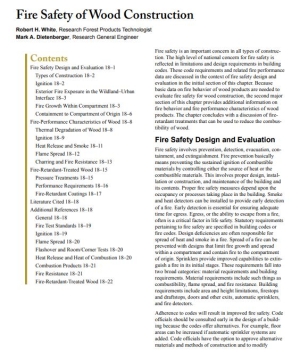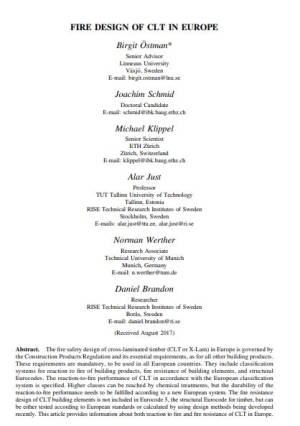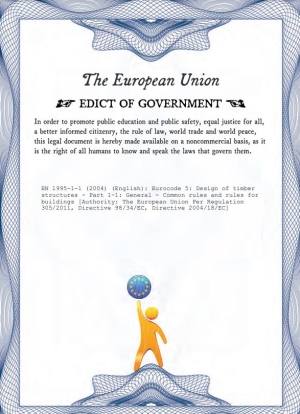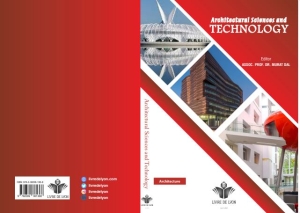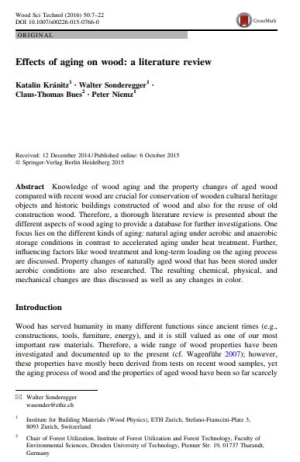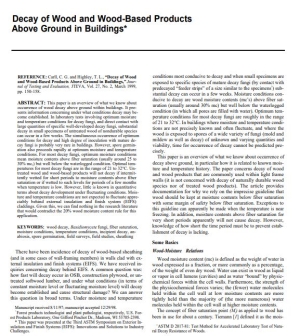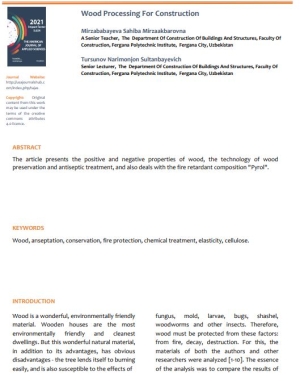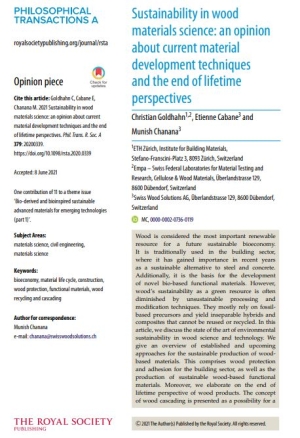Super User
Fire Safety of Wood Construction
Fire safety is an important concern in all types of construction. The high level of national concern for fire safety is reflected in limitations and design requirements in building codes. These code requirements and related fire performance data are discussed in the context of fire safety design and evaluation in the initial section of this chapter.
Fire design of CLT in Europe
The fire resistance design of CLT building elements is not included in Eurocode 5, the structural Eurocode for timber, but can be either tested according to European standards or calculated by using design methods being developed recently. This article provides information about both reaction to fire and fire resistance of CLT in Europe.
EUROCODE 5 Design of timber structures
General -Common rules and rules for buildings, based on the Eurocode 5, which is referred to stuctures using wood
Energy Efficiency in Cross Laminated Timber (CLT) Buildings
This Chapter presents examples of CLT buildings and how these result into an energy efficient approach regarding the materials and the energy input
Effects Of Aging On Wood
Knowledge of wood aging and the property changes of aged wood compared with recent wood are crucial for conservation of wooden cultural heritage objects and historic buildings constructed of wood and also for the reuse of old construction wood.
Decay of Wood and Wood-Based Products Above Ground in Buildings
This paper is an overview of what we know about occurrence of wood decay above ground within buildings. It presents information concerning under what conditions decay may become established.
Wood Processing For Construction
The article presents the positive and negative properties of wood, the technology of wood preservation and antiseptic treatment, and also deals with the fire retardant composition "Pyrol".
Wood as a building material in the light of environmental assessment of full life cycle of four buildings.
Four functionally equivalent buildings with different material structure, building technology and energy standards have been subjected to Life Cycle Assessment (LCA) environmental impact analysis. The study has taken into account a full life cycle of the buildings, including the following stages: production of building materials, prefabrication, transport to the building site, building, use, demolition, transport of waste and final disposal of waste.
Use of wood in green building, a study of expert perspectives from the UK
In this article an attempt to increase our understanding of "Green Buildings" and the potential for using wood to enhance this concept from the market point of view is being undertaken, with emphasis on experts in the UK construction sector, using qualitative analysis of interview data.
Sustainability in wood materials science, an opinion about current material development techniques
In this article, it is discussed the state of the art of environmental sustainability in wood science and technology. An overview of established and upcoming approaches for the sustainable production of woodbased materials is mentioned. This comprises wood protection and adhesion for the building sector, as well as the production of sustainable wood-based functional materials.





